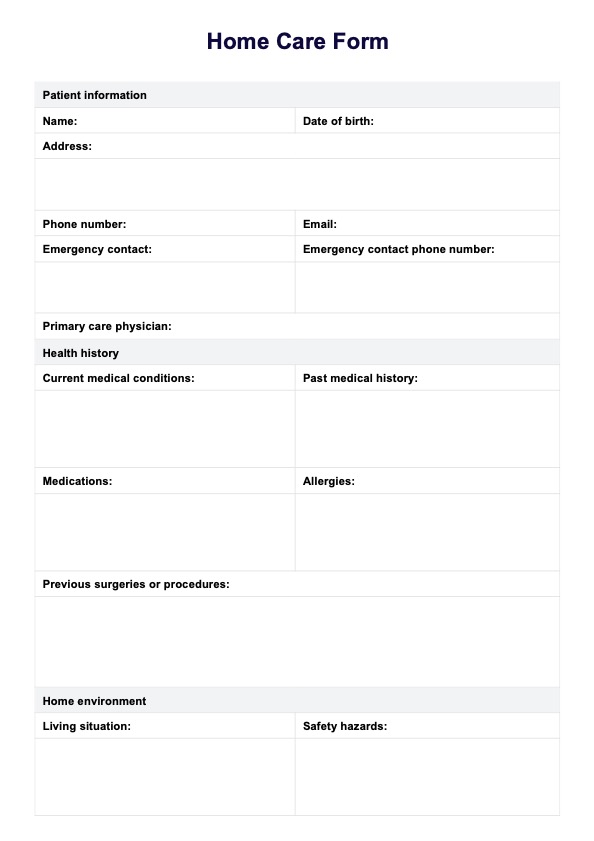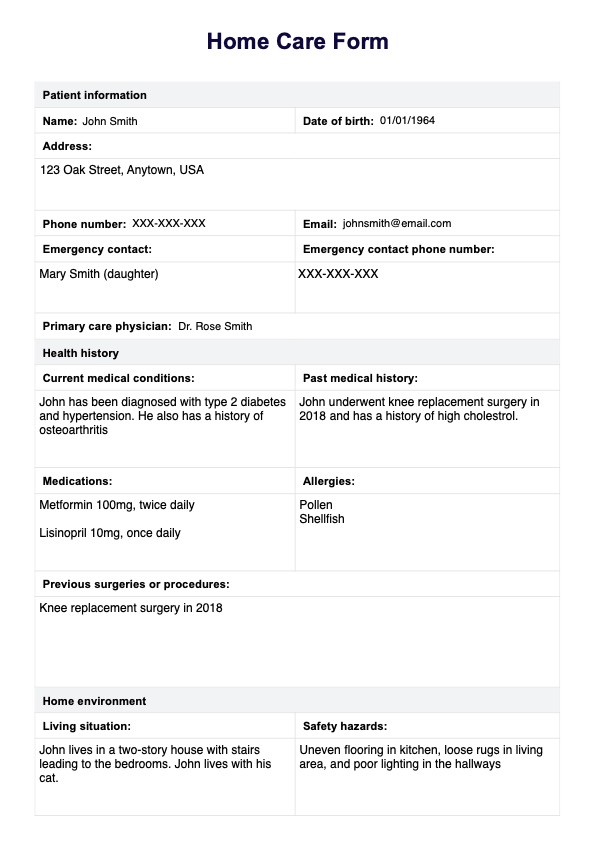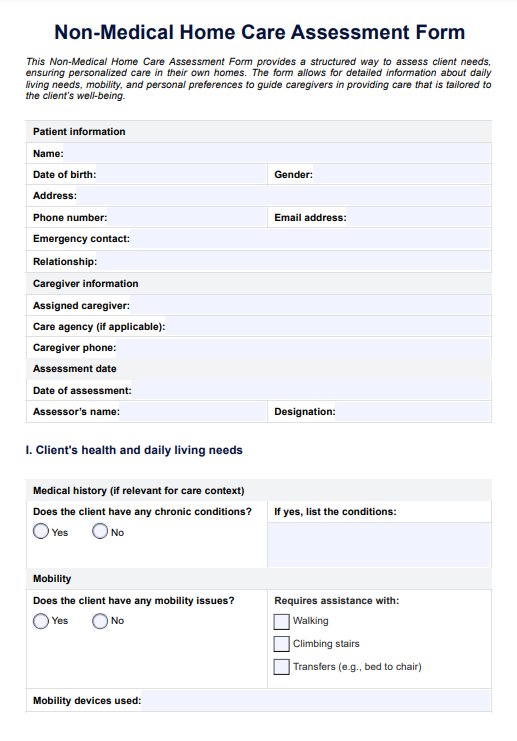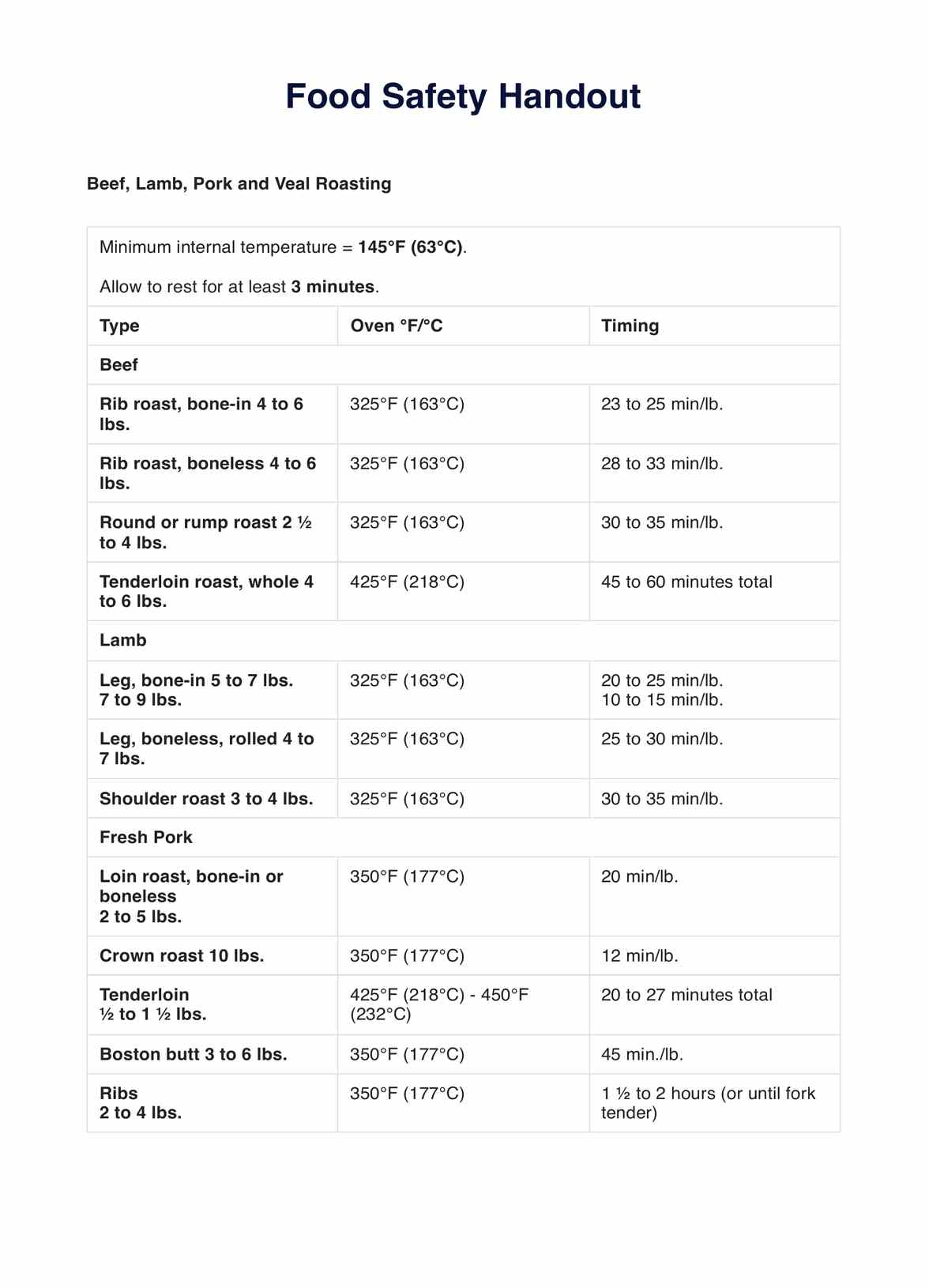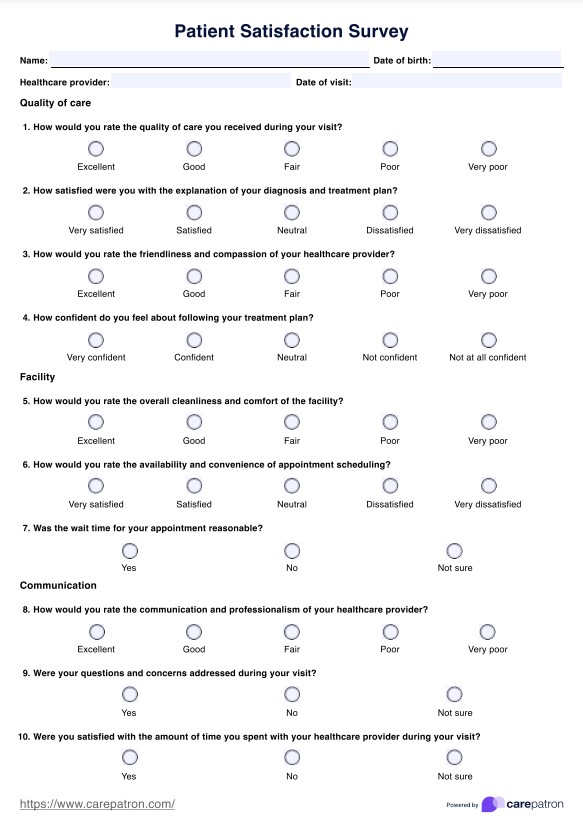Home Care Form
Optimize your healthcare with our Home Care Form, ensuring streamlined processes and personalized care. Improve efficiency today!


What is home care?
Home care is a personalized approach to healthcare that directly brings medical services and support to individuals in the comfort of their homes. It encompasses a wide range of services tailored to meet each patient's specific needs.
Individuals who are at risk and may require home care assistance are people who, undergone major surgery, live with a physical disability, live with a chronic illness, or are eldery (Trautsamwieser & Hirsch, 2011). At the heart of home care is developing a comprehensive care plan, which outlines the exact services and interventions required to promote health and well-being. Applying this care plan template can enrich your practice and elevate client satisfaction.
A crucial component of home care is the caregiver assessment, which evaluates the capabilities and needs of those providing care in order to ensure they have the necessary support and resources. This assessment helps identify areas where additional assistance may be required and allows for developing strategies to address any challenges.
The home health forms are based on manual data entry and central to coordinating home care services. It serves as a tool for documenting important information, such as patient demographics, medical history, and treatment plans. These forms streamline communication between healthcare providers, caregivers, and patients, ensuring everyone is on the same page about the matter.
Home health services encompass a wide range of medical and non-medical interventions, including skilled nursing care, physical therapy, and assistance with activities of daily living. These services are provided by a team of healthcare professionals, including nurses, therapists, and aides staff, who work together to promote healing and independence.
Home Care Form Template
Home Care Form Example
How to use this template?
This comprehensive guide outlines the simple yet essential steps in completing the form to start and initiate personalized care:
Step 1: Access the form
As the appointed physician, you can access this document from the Carepatron app. From here, you can decide whether you want to utilize this document online or print it as a physical copy.
Step 2: Review instructions
Take a moment to review the fields for the form. Familiarize yourself with the sections that need to be filled out with patient data and any specific requirements or guidelines you may need to follow.
Step 3: Gather information
Gather all necessary information, documents and health forms required to complete the form accurately. This may include personal details, medical history, current medications, and any specific care preferences or goals you may wish the patient to achieve.
Step 4: Complete the form
Work with your patient to carefully fill out each form section, providing detailed and accurate information. Ensure that all fields are completed, as this will support healthcare workers to tailor the care plan to meet individual needs.
Step 5: Submit the form
Once the form is filled out, you may keep it on record for your information. You may then submit it to designated healthcare providers (e.g., insurance). This is easy and may involve getting in contact with appropriate healthcare practitioners going forward.
Benefits of home health care
Home healthcare offers many advantages that cater to the unique needs and preferences of individuals seeking personalized healthcare solutions.
Enhanced comfort and convenience
One of the primary benefits of home health care is the ability to receive medical attention and support services in the comfort of one's own home. This environment promotes relaxation and reduces stress, fostering a conducive atmosphere for healing and recovery.
Personalized care plans
Home health care services are tailored to meet each individual's specific needs and preferences. Care plans and assessments are developed in collaboration with healthcare professionals and caregivers, ensuring that every aspect of the patient's well-being is addressed comprehensively.
Independence and autonomy
By receiving care at home, individuals can maintain a sense of independence and autonomy over their daily lives. They can continue to engage in familiar routines and activities, preserving their dignity and self-esteem throughout the healing process.
Reduced risk of infections
Home environments are less prone to infectious diseases than hospitals or long-term care facilities. By receiving care at home, individuals are less exposed to pathogens, reducing the risk of acquiring secondary infections and promoting faster recovery.
Reference
Trautsamwieser, A., & Hirsch, P. (2011). Optimization of daily scheduling for home health care services. Journal of Applied Operational Research, 3(3), 124–136.
Commonly asked questions
It helps healthcare providers understand the patient's needs, create personalized care plans, and ensure efficient care coordination among all involved parties.
The home care call request form is typically filled out by the patient or their caregiver with assistance from healthcare professionals, as needed.
It should be updated regularly, primarily when changes in the patient's health status, medications, or care requirements, to ensure that the care plan remains current and effective.


